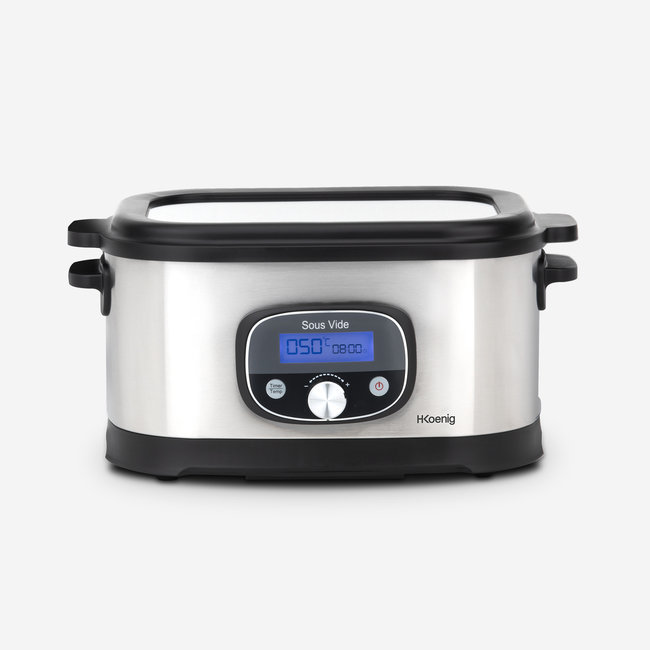-
About vacuum cooking.
Vacuum cooking is a popular cooking method in professional kitchens.
For this cooking method, food is placed in bags that can withstand cooking and air is sucked out: the food is then vacuum-packed. The food is then cooked in a water bath. The food is cooked at low and constant temperatures over long periods of time. This helps to intensify the taste of the food.
-In addition, as the bags are sealed, the food cooks in its own juices and soaks up the spices and seasonings added before cooking. Vitamins, minerals and flavours are thus preserved.
-The food is prepared in a healthy way, it is more tender and tasty. In the case of meat, because the cooking method tenderizes it, you can use more economical cuts without sacrificing quality (consider using cuts such as shoulder or shank, which are often tastier than more expensive cuts).
Since the food is in individual pouches, you can cook several kinds of food at once without worrying about mixing flavours.
It is difficult to overcook with the vacuum cooking method, but the texture may change during cooking. You can prepare the dishes in advance, which makes this method very convenient when entertaining guests.Did the answer solve your problem?
-
Vacuum cooking food
Meat lends itself rather well to this method of cooking because it makes it tender, juicier and tastier. However, fish and vegetables can also be cooked this way. We recommend this cooking method for the foods below:
-Beef, veal, lamb, pork and game.
-Chicken, turkey and duck.
-Fish, lobster and scallops.
-Root vegetables such as potatoes, carrots, radishes, beets and parsnips.
-Vegetables such as peas, asparagus, corn, broccoli, cauliflower, onions and squash.
-Hard fruits such as pears and apples
-Tender fruits such as mangoes, plums, apricots, peaches, nectarines, papaya or strawberries.Did the answer solve your problem?
-
How to prepare food?
Food must always be fresh.
-Check that meat and fish have been properly preserved at 5°C before cooking.
-Never reuse bags for vacuum packing.
-Keep raw and cooked food separate.
-Wash your hands thoroughly before cooking and ensure that the surfaces are clean and healthy.
-Observe the recommended thickness, cooking time and temperature in the table below.Did the answer solve your problem?



